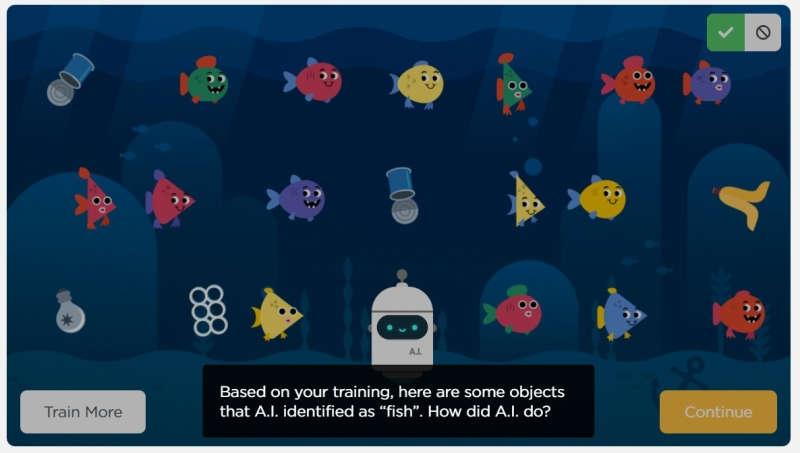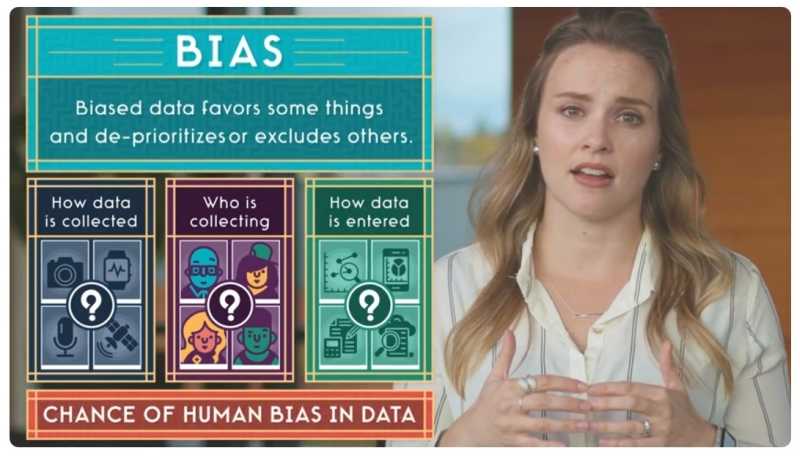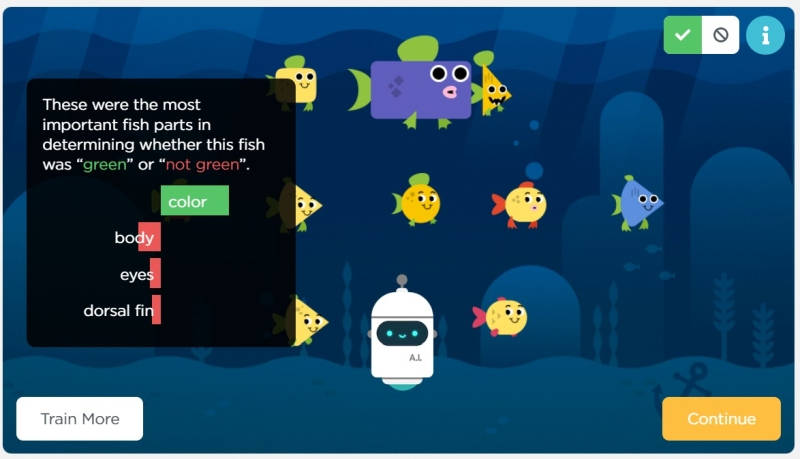| AI for Oceans - Kids Use Computer Science For Good |
| Written by Nikos Vaggalis | |||
| Monday, 09 December 2019 | |||
|
Code.org expands beyond teaching the concepts of coding. It moves on to artificial intelligence, AI. Computer Science Education Week starts today and with it Hour of Code events in schools around the world. Teaching coding isn't enough any longer! Kids should also be taught the concepts of artificial intelligence at the same time! As we've examined in "Artificial Intelligence for K-12" things evolve rapidly and familiarization with AI from school age is the new norm among the tech education industry: The coming generations should be able to cope in a landscape shaped by the 4th Industrial Revolution.The reasoning goes that in the near future and in one way or another, AI will affect most aspects of our lives, therefore kids should not just become consumers of this technology, they also have to be able to work with it in order to create solutions which collectively will make the world a better place. That's what Code.org is attempting to reflect with its new Hour of Code for 2019. In "AI for Oceans" students in Grade 3 and above learn about AI by using it to clean our Oceans. In a mix of tiny video talks and interactive gaming activities, students are introduced to the concepts of AI, specifically machine learning, by being tasked with teaching a ML algorithm how to tell fish from garbage. Walking in the shoes of Amazon's Mechanical Turk, kids are presented with scrolling images of objects and fish which they must tag as one or the other in order to teach the algorithm to understand which is which.
It is explained that the algorithm's performance is closely correlated to both the quality of the data fed as well as the labeling by its users.That is, if you tag a bottle as fish then you render the algorithm prone to misrepresenting objects as fish or the other way around. This is nicely demonstrated in the activity that comes after the labeling stage where you can observe the algorithm working on its own categorizing of images.The better the input it received, the better results it gives and in case of much deviation, the game prompts the student to re-train the algorithm with more data.
Although not explicitly telling what the practical implication of an fish recognizing algorithm can be, it is understood that quite possibly, a robot powered by that algorithm could go underwater to clean the waters by collecting the garbage while leaving the fish alone. The tutorial also touches on the issue of Ethics in AI by going through the bias that can be introduced in the data used to train the algorithm.It is explained that the input "data" comes in many forms; it could be images, video, audio or even X-rays, and if, for example, all the X-ray scans are of male patients then the algorithm won't be able to make accurate predictions when faced with scans of female patients, see How AI Discriminates for another educational approach to bias.
This notion can be generalized to other sectors. For example, if a hiring algorithm is only trained on CVs of candidates of a specific gender or race, then it is going to reject those that seem unfamiliar to it, hence the importance of feeding the AI with high quality data. Quality here is defined as "is this enough data to accurately train a computer?" together with "does this data represent all possible scenarios and users without bias?". Teaching kids those values early on is what sets the foundations for a sound approach to AI in the future. The tutorial also implicitly touches on the notion of AI explain-ability. While engaged on the task of teaching the algorithm which fish are Green, you find out the criteria that the algorithm employs to classify fishes as green or not. In this case the criteria used were the color, the tail, the body and the fish's eyes. I would like the tutorial to at least touch on the issues that arise if you treat AI as an unexplainable black box - see TCAV Explains How AI Reaches A Decision.
The final part of the tutorial is looking at "AI's impact on society". This considers what make self driving cars happen, the use of AI in agriculture, how it can contribute to a self-sustainable future and in discovering new medicine.For an extended review of AI's role in our future make sure to check How Will AI Transform Life By 2030? Initial Report. In the end I found the material highly enjoyable and effective. In a few short (1-3 minute videos) the foundations, ethical aspects and usage scenarios of AI are laid out in a way that is easily understood, not just by kids but by everyone else. The interactive games just amplify the effect. Code.org has not deviated from its primary purpose of teaching coding. In AI for Oceans, programming is still taught, but instead of programming the algorithm using code, you use data. Code.org,well done!
More InformationRelated ArticlesHour of Code Aiming for a Billion Served in 2019 Artificial Intelligence for K-12 How Will AI Transform Life By 2030? Initial Report TCAV Explains How AI Reaches A Decision Neural Networks In JavaScript With Brain.js To be informed about new articles on I Programmer, sign up for our weekly newsletter, subscribe to the RSS feed and follow us on Twitter, Facebook or Linkedin.
Comments
or email your comment to: comments@i-programmer.info |
|||
| Last Updated ( Tuesday, 02 March 2021 ) |







